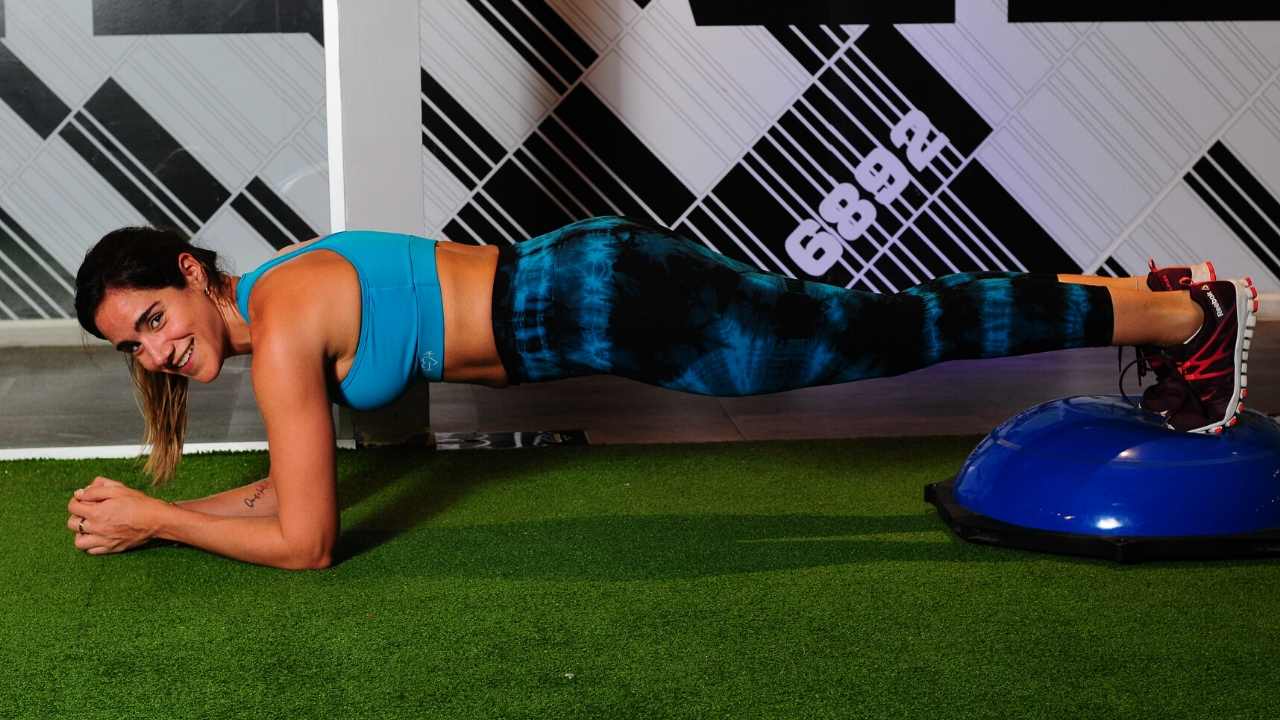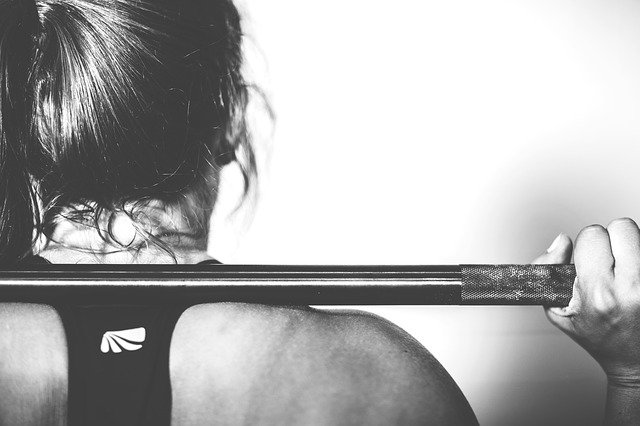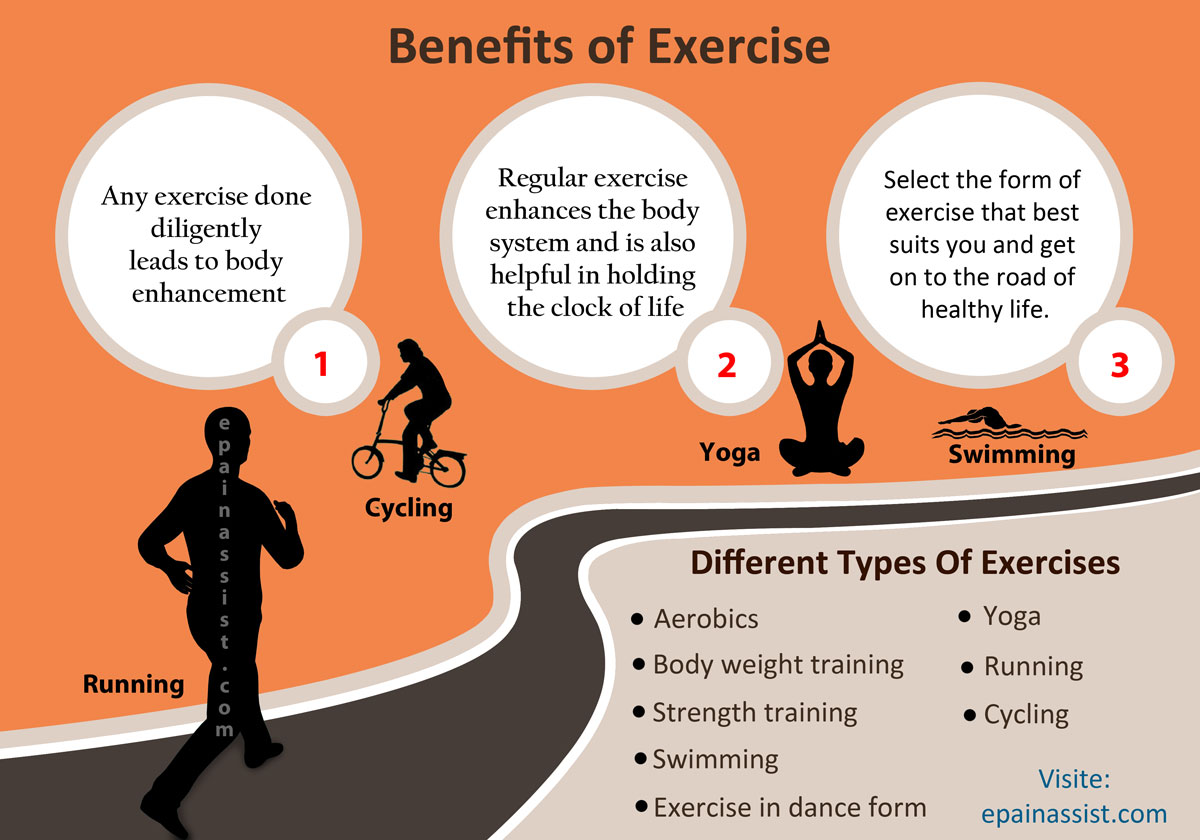
You may be wondering how to workout in the morning. Although you can work out at any hour of the day, morning sessions will give you more energy than evening sessions, which can make it harder for your brain to stay awake. Here are some ways to get started. Here are some tips to help you get the most of your exercise routine once you've made time each day to exercise.
1. Get up early to start your workout. The best time to exercise is in the morning. The core temperature is lower in the morning, making it easier to achieve your target heart rate and avoid injury. You're also less stressed when you don't have to worry about work or other commitments. It can be hard to fit in a morning exercise program, but it's the best time.

Pick a workout that is convenient for you. Start with a 20 minute workout for the first few week. You can avoid getting up at a strange hour. Your body can become dehydrated after sleeping through the night. It is important to stay hydrated. Besides being effective, an early morning workout can also help you stay motivated. You might even feel motivated enough to go swimming or doing some other vigorous activity early in the day.
Getting up earlier can help you stay in shape and be more productive throughout the day. Doing your morning workout will ensure that you don't worry about missing a job or having to take on other responsibilities later. Your body will be more focused and alert, which will help you complete your workout faster. You'll also have more time for other activities, such as homework, in addition to a higher energy level.
If you're a morning person, you'll want to start your workout early. If you are not a morning person, you should warm up before starting a workout. You'll feel more awake and confident, and you will be more positive about the day ahead. Healthy mind is key to success in every aspect of your life.

When you wake up early, you'll have more energy. Your body's temperature is lower in the morning. Morning exercise will bring more oxygen to your muscles and increase blood circulation. Start your workout at least 30 minutes earlier than you normally do. It can be hard to get up in mornings, but it is possible with a good morning routine.
FAQ
Is being cold bad for your immune system?
It is said that there are 2 types of people: those who love winter (and those who hate it). You may wonder why you feel so bad when it's cold, regardless of whether you love it or hate it.
The fact is that our bodies are designed for warmth and function best. We evolved to thrive in hot environments because of the abundance of food resources.
We live in a very different environment than our ancestors. We spend more time indoors and are often exposed to extreme temperatures (cold or heat) and eat processed foods rather than fresh.
As a result, our bodies aren't used to such extremes anymore. When we do venture out, our bodies are unable to cope with the extremes.
However, there are some ways to reduce these effects. The best way to avoid these problems is to ensure that your body stays hydrated throughout the day. Water is essential for your body to function properly and eliminate toxins.
It is important to eat healthy foods. Your body will stay at its best when you eat healthy foods. This is especially helpful for people who spend a lot of time indoors.
Consider taking a few moments each morning to meditate. Meditation is a great way to relax your body and mind. It makes it easier for you to cope with stress and illness.
What can you do if your immune system is weak?
There are trillions upon trillions on cells in the human body. These cells work together to form organs and tissues that perform specific functions. One cell is replaced by another when it dies. Chemical signals, called hormones, allow cells to communicate with each other. All bodily processes are controlled by hormones, including metabolism and immunity.
Hormones refer to chemicals produced throughout the body by glands. They circulate through the blood stream and act as messengers to regulate how our bodies function. Some hormones can be produced in the body, while others may be made outside.
Hormone production occurs when hormone-producing cells release their contents into your bloodstream. Once hormones are released they move through the bloodstream until they reach their intended organ. In some cases hormones can remain active for only a few hours. Other hormones can remain active longer, and they continue to affect the body's functionality even after leaving the bloodstream.
Some hormones are produced in large quantities. Others are made in small quantities.
Some hormones are produced at certain times during life. For instance, estrogen is produced during puberty, pregnancy, menopause, and old age. Women can get estrogen to build breasts, prevent osteoporosis, and keep their bones healthy. Estrogen promotes hair growth, and skin stays soft and smooth.
How can I live the best life possible every day?
Find out what makes YOU happy. This is the first step in living a life that you love. You can then work backwards once you know what makes YOU happy. You can also ask other people what they do to live the best lives possible every day.
You can also read books like "How to Live Your Best Life" by Dr. Wayne Dyer. He talks about how to find happiness and fulfillment at all stages of our lives.
How often should i exercise?
Exercise is essential for maintaining a healthy lifestyle. But, you don't need to spend a specific amount of time exercising. The key is finding something you enjoy and stick with it.
When you exercise three times per week, aim for 20-30 minutes moderate intensity. Moderate intensity means that you will still be working hard even after your workout is over. This type is good for burning around 300 calories.
Walking is a great option if you are a keen walker. You can do 10-minute walks four days per week. Walking is easy on the joints and has low impact.
You can also run for 15 minutes, three times per week. Running is an excellent way to lose weight and tone your muscles.
Begin slowly if your are not used to working out. Start by doing 5 minutes of cardio each day, a few times per week. Gradually increase the duration until you reach your goal.
What is the problem of BMI?
BMI stands to Body Mass Index. It is a measurement of body weight based on height. The following formula is used to calculate BMI:
The weight of a kilogram divided by its squared height in meters.
The result is expressed using a number from 0 through 25. Scores between 0 and 25 indicate obesity. A score of 18.5 indicates overweight. A score of 23 indicates obesity.
A person who weighs 100 kg and has a height of 1.75 m will have a BMI of 22.
Do I need calories to count?
You might wonder, "What's the best diet for me?" or "is counting calories necessary?" Well, the answer depends on several factors including your current health status, your personal goals, your preferences, and your overall lifestyle.
The Best Diet for me - Which One Is Right for You?
The best diet for me depends on my current health status, my personal goals, my preferences, and my overall lifestyle. There are many diets available, some good and others not so good. Some work well for certain people while others don't. So what do I do? How do I make a good decision?
This article aims at answering these questions. The article starts by introducing the many types of diets currently available. Then we will discuss the pros & cons of each kind of diet. Then, we will discuss which diet is the best.
Let's first take a look at different diets.
Diet Types
There are three main types. Low fat, high proteins, and ketogenic. Let's take a look at them all below.
Low Fat Diets
A low-fat diet is one that limits the intake of fats. This is achieved through reducing intakes of saturated fats (butter and cream cheese, for example). They are replaced by unsaturated fats such as avocados, olive oil, and cream cheese. A low fat diet is often recommended for those who want to lose weight quickly and easily. This kind of diet could cause problems like constipation or heartburn and indigestion. If a person doesn’t receive enough vitamins from their foods, this can lead to vitamin deficiency.
High Protein Diets
High protein diets are known to restrict carbohydrate intake and promote the consumption of proteins. These diets are more protein-rich than others. These diets are intended to increase muscle mass and reduce calories. However, they might not provide enough nutrition for those who need to eat frequently. They may also be too restrictive and not suitable for everyone.
Ketogenic Diets
Also known as keto diets, ketogenic diets are also called keto diets. They are high-fat and low in carbs and protein. Athletes and bodybuilders use them because they allow them more time and harder training without feeling fatigued. You must adhere to all side effects, including fatigue, headaches, nausea and headaches.
Statistics
- According to the Physical Activity Guidelines for Americans, we should strive for at least 150 minutes of moderate intensity activity each week (54Trusted Source Smoking, harmful use of drugs, and alcohol abuse can all seriously negatively affect your health. (healthline.com)
- nutrients.[17]X Research sourceWhole grains to try include: 100% whole wheat pasta and bread, brown rice, whole grain oats, farro, millet, quinoa, and barley. (wikihow.com)
- Extra virgin olive oil may benefit heart health, as people who consume it have a lower risk for dying from heart attacks and strokes according to some evidence (57Trusted Source (healthline.com)
- In both adults and children, the intake of free sugars should be reduced to less than 10% of total energy intake. (who.int)
External Links
How To
What does the term "vitamins" mean?
Vitamins are organic substances found naturally in food. Vitamins aid us in absorbing nutrients from the food we eat. Vitamins cannot be produced by the body. They must be acquired from food.
There are two types vitamins: water soluble or fat soluble. Water-soluble vitamins dissolve in water easily. You can find vitamin C,B1 or thiamine, B2 or riboflavin and B3 or niacin, B3/niacin, B6/pyridoxine, folic Acid, biotin and pantothenic Acid as examples. The liver and fat soluble vitamins are stored within the liver and in fatty tissue. Examples include vitamin D, E, K, A, and beta carotene.
Vitamins can be classified according to biological activity. There are eight major groups of vitamins:
-
A - vital for healthy growth.
-
C - vital for proper nerve function, and energy production.
-
D - necessary for healthy bones and teeth.
-
E is needed for good reproduction and vision.
-
K - Essential for healthy muscles and nerves.
-
P - Vital for strong bones and teeth.
-
Q - aids digestion and absorption of iron.
-
R - Required for red blood cell production
The recommended daily intake (RDA), of vitamins varies with age, gender and physical condition. The U.S. Food and Drug Administration, (FDA), sets the RDA value.
For adults 19 years and over, the RDA of vitamin A is 400mg per day. However, pregnant women need 600 micrograms per day because it is important for fetal development. Children ages 1-8 require 900 micrograms per day. Babies under one-year old require 700 mg per day. Between 9 and 12 years of age, however, this drops to 500 mg per day.
Children aged 1-18 years need 800 micrograms daily, while children overweight require 1000 micrograms per days. Children who are severely obese or underweight will need 1200 micrograms each day.
Children between 4 and 8 years old with anemia will need 2200 micrograms daily of vitamin C.
2000 micrograms are required daily for good health in adults over 50. Breastfeeding or pregnant women require 3000 micrograms per daily due to higher nutrient demands.
1500 micrograms are required daily by adults over 70 because they lose approximately 10% of their muscle each decade.
Women who have been pregnant or are lactating require more than the RDA. Pregnant mothers need 4000 micrograms per daily during pregnancy and 2500 after giving birth. Breastfeeding moms need 5000 micrograms each day when breastmilk production occurs.